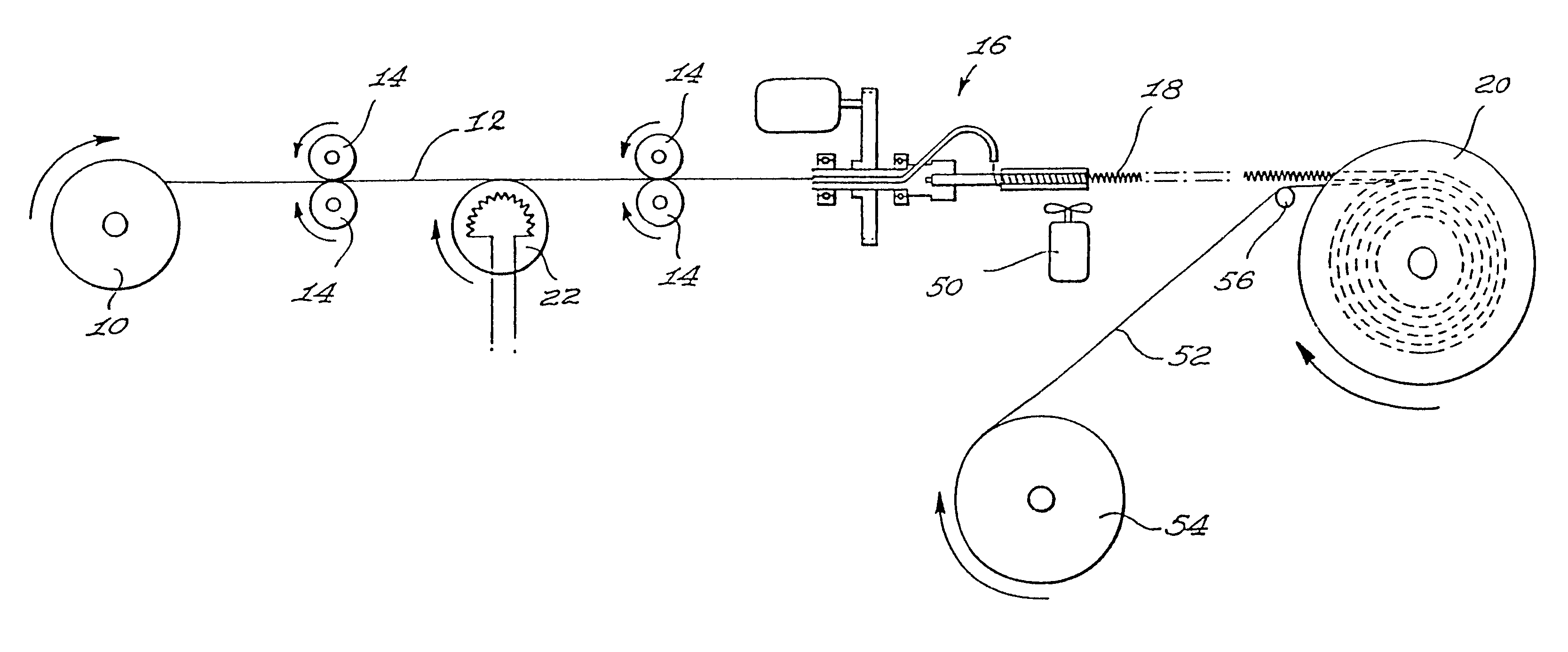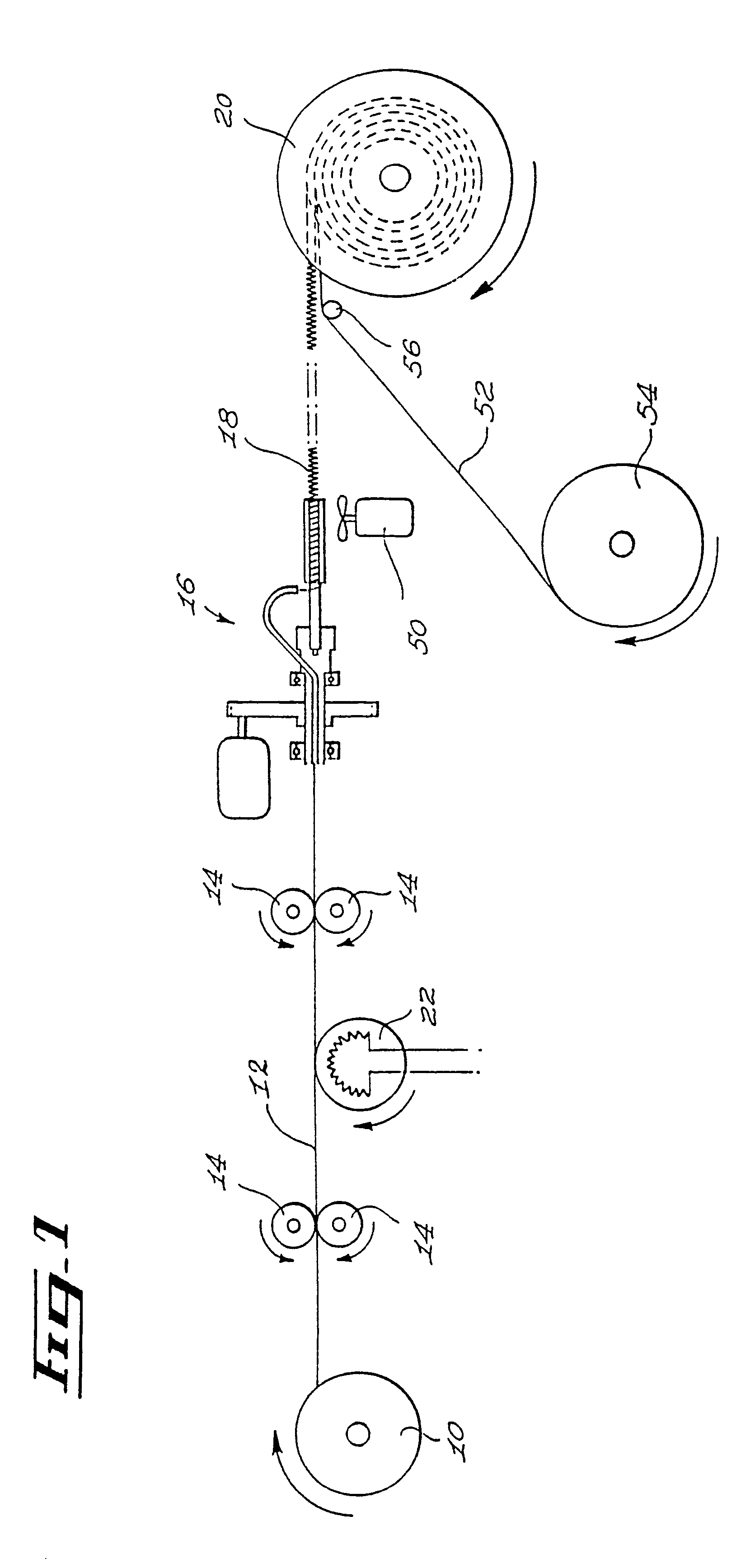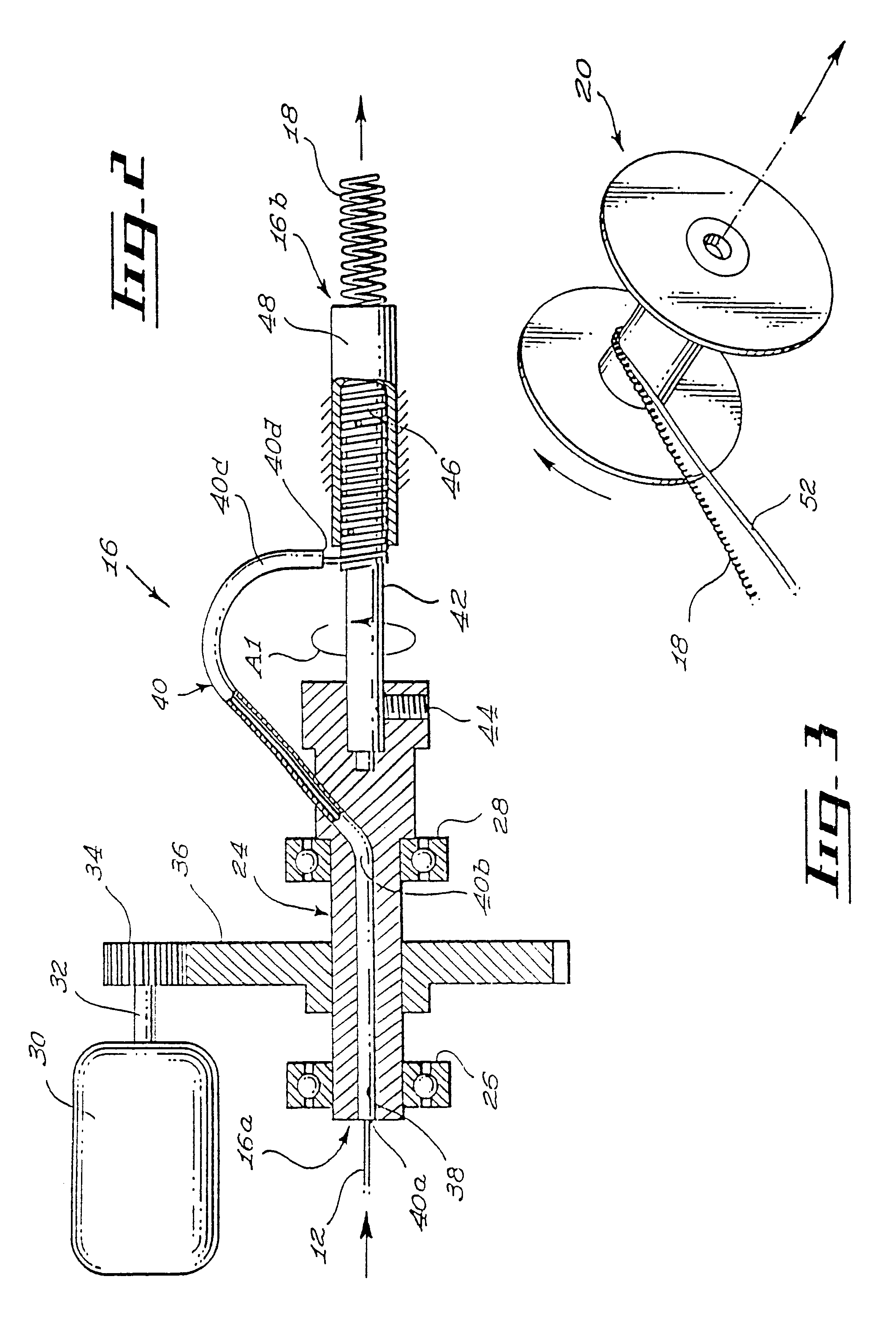Plastic coil and method of forming same
a technology of plastic coils and coils, applied in the field of plastic coils, can solve the problems of plastic coil wires that cannot be wound around a spool for storage and carrying, important waste of plastic coil materials, and extra coil materials
- Summary
- Abstract
- Description
- Claims
- Application Information
AI Technical Summary
Benefits of technology
Problems solved by technology
Method used
Image
Examples
Embodiment Construction
FIG. 1 schematically shows a wire supply spool 10 supplying a straight continuous flexible thermoplastic wire 12. Wire 12 is conveyed by means of a number of feeding rollers 14, e.g. four feeding rollers 14, into a plastic coil forming apparatus 16 according to the invention. Apparatus 16 forms an elongated continuous plastic coil 18 from wire 12, and preferably comprises a storing spool 20 for wounding and storing coil 16 in a manner which will be detailed hereinafter. A conventional heater device 22 is provided adjacent wire 12 and is located upstream of the rest of apparatus 16, for example between two successive pairs of feeding rollers 14, so that wire 12 may achieve a semi-viscous state which is characterized by the fact that it becomes soft and pliable while maintaining a sufficient intrinsic structural integrity to be propelled by the feeding rollers 14 throughout apparatus 16. Power means (not shown) drive rollers 14 into their rotative movement at a selected speed.
FIG. 2 s...
PUM
| Property | Measurement | Unit |
|---|---|---|
| lengths | aaaaa | aaaaa |
| length | aaaaa | aaaaa |
| length | aaaaa | aaaaa |
Abstract
Description
Claims
Application Information
 Login to View More
Login to View More - R&D
- Intellectual Property
- Life Sciences
- Materials
- Tech Scout
- Unparalleled Data Quality
- Higher Quality Content
- 60% Fewer Hallucinations
Browse by: Latest US Patents, China's latest patents, Technical Efficacy Thesaurus, Application Domain, Technology Topic, Popular Technical Reports.
© 2025 PatSnap. All rights reserved.Legal|Privacy policy|Modern Slavery Act Transparency Statement|Sitemap|About US| Contact US: help@patsnap.com



